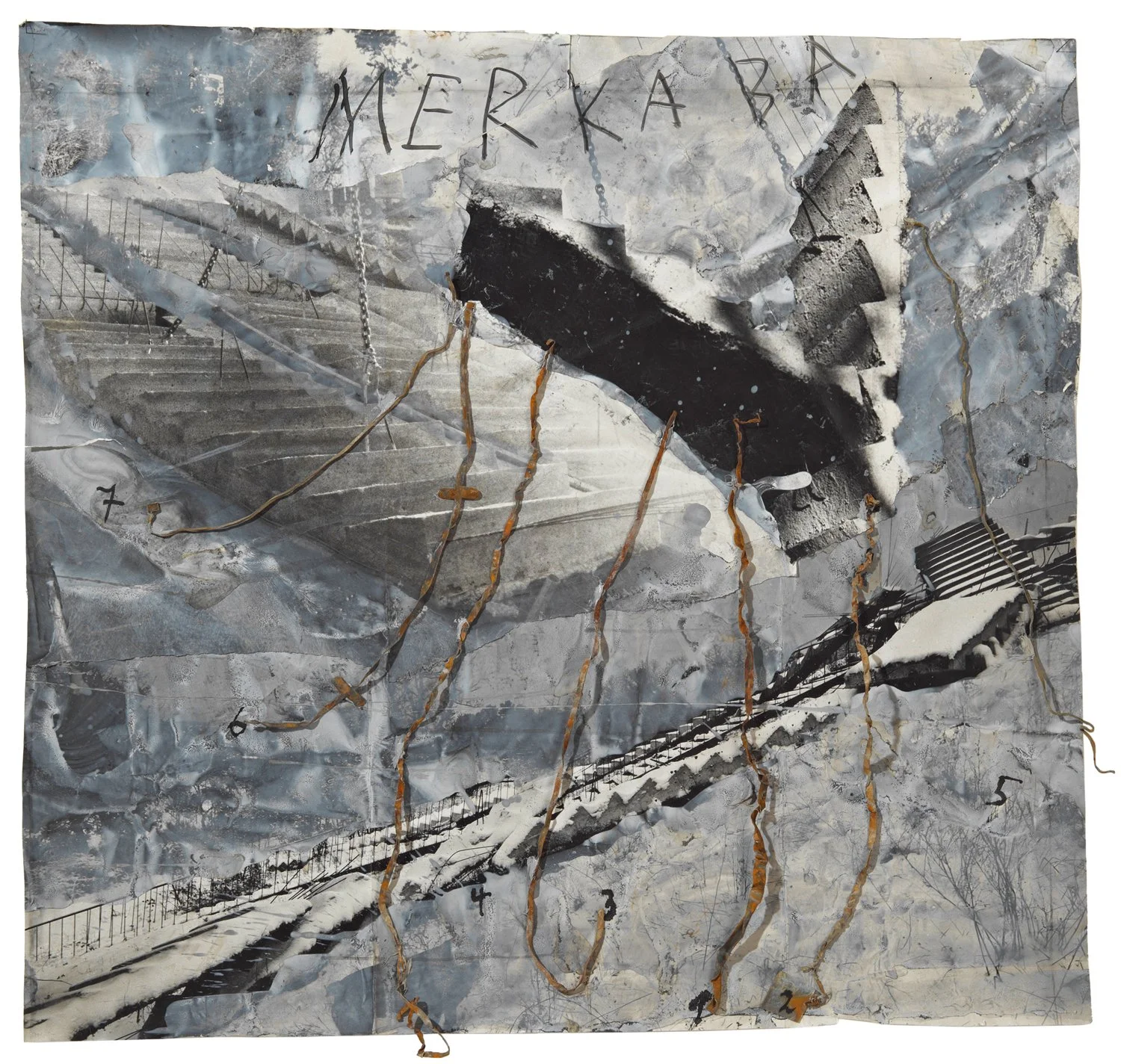Anselm Kiefer: Building A Narrative
Portrait by Barbara Klemm
BY JOE CUCCIO
Anselm Kiefer is internationally recognized for his marvelous paintings, sculptures, and books. What most do not realize is that he has a long-standing relationship to photography. His first works created in the 1960s, were found in photography and action. As his artistry evolved, Kiefer continued to covet photography as the “sainted assistant” in his practice for its ability to aid in capturing memory. Photography is at the core of Kiefer’s process and has always been present in the monumental pieces he has exhibited throughout his prolific career. However, never before has the photograph been the main attraction in an Anselm Kiefer exhibition, until now.
Lille Métropole Musée d’art moderne (LaM), is serving as the space for Kiefer’s first show focused mainly on his practice as a photographer. The museum is celebrating its fortieth birthday and to close its birthday season they have presented this exhibition centered on one of Germany’s most remarkable artists. This exhibition displays over one hundred thirty works spanning from his early days as an artist in the 1960s and up until the contemporary moment.
Anselm Kiefer, Unfruchtbare Landschaften (Barren Landscapes), 1969; Photo by Charles Duprat.
The exhibition spans the entirety of his extensive engagement with photography and continues to uplift his thematic threads of mythology, razing various forms of architecture, alchemy, and geophysics. Pieces are split up into nine sections, with cohesion throughout the entire space. Engineering the image to uphold Kiefer’s common themes is present in each corner of this show.
In one of the earliest works from this collection, “Der gestirnte Himmel über uns und das moralische Gesetz in uns,” the viewer sees a subject giving a Nazi salute while a cloud of darkness looms overhead. Kiefer began his life as an artist by engaging with the tragic nature of Nazism and its origin of evil. Here he constructs a culturally charged image through gesture and points to his relationship with this ideology by incorporating the tenebrosity above. Kiefer also displays his ability to place poignant statements within his images by altering them. Here we find that Kiefer has constructed the murky form above the subject in the image. It is an extraordinary display of how through the practice of staining, scribbling, gluing, painting, burning, erasing, and other forms of manipulation the work becomes more complex.
Vue de l’exposition Anselm Kiefer, la photographie au commencement, au LaM. Photo : N. Dewitte /LaM Anselm Kiefer, pour Saint-John Pierce - une même vague depuis Troie roule sa hanche jusqu'à nous, 2023, Plomb, acier, photographies © Anselm Kiefer.
The pieces within the exhibition are certainly centered on the image, but they do not lose sight of Kiefer’s unmatched ability to bring art to life through sculptural practice. In a piece such as “Bergkristall,” we see his passion for the use of photography and materiality fuse to breathe life into his artwork. This piece has a photograph of two young boys in the foreground that is awakened through the use of metal, glass, plywood, acrylic, and watercolor in the presentation of the image. The boys are the center of the piece, but the rigid materials surrounding them along with the abstract depiction of a landscape to their rear allow for the photograph to become much more emotive.
Anselm Kiefer, Der gestirnte Himmel über uns und das moralische Gesetz in uns (The Starry Sky Above Us and the Moral Law Within Us), 1969-2009. ©Anselm Kiefer. Photo: Atelier Anselm Kiefer
Anselm Kiefer, Merkaba, 2005. ©Anselm Kiefer. Photo: Atelier Anselm Kiefer
Kiefer has made so many pieces that demand presence and this show is no different. He can animate photography in ways that only a virtuoso of the medium can. Within this exhibition, we see the use of photography inform large-scale works that are a blend of photography and mixed media. The piece “Am Anfang,” is a pictorially driven depiction of a grandiose landscape, and it has an overtly sculptural element bisecting the frame. This artwork is about the beginning of existence, and although it is an innately photographic piece, its scale and materiality compel viewers in a three-dimensional way. As an image, this piece is breathtaking. From top to bottom, we see fleecy clouds converge with waves crashing. The scene is one to get lost in, and what enhances the interest in the physical object is the fabricated ladder which parts the landscape. This ladder reaches the top of the sky and as it falls to the ground liquifies into a mesh of materials. The entire piece makes us ponder on the connection between what exists above the sky and below the earth.
Kiefer began his life as an artist by engaging with the tragic nature of Nazism and its origin of evil
Kiefer is a savant at building pieces that we must remain attentive to, and each photographic object shown in this exhibition stands the test of that sentiment. These works are a wonderful display of how photography has impacted his unique vision throughout his life as a maker. He’s one of the most inventive artists to exist within the last 100 years, and through this exhibition, onlookers gain insider access to his process whilst observing his awe-inspiring art.
Anselm Kiefer, The Secret Life of Plants, 1998; © Anselm Kiefer; Photo by Charles Duprat
Anselm Kiefer, Für Martin Heidegger Todtnauberg (For Martin Heidegger Todtnauberg), 2010-2014. © Anselm Kiefer; Photo by Charles Duprat
Anselm Kiefer. © Anselm Kiefer; Photo by Charles Duprat















